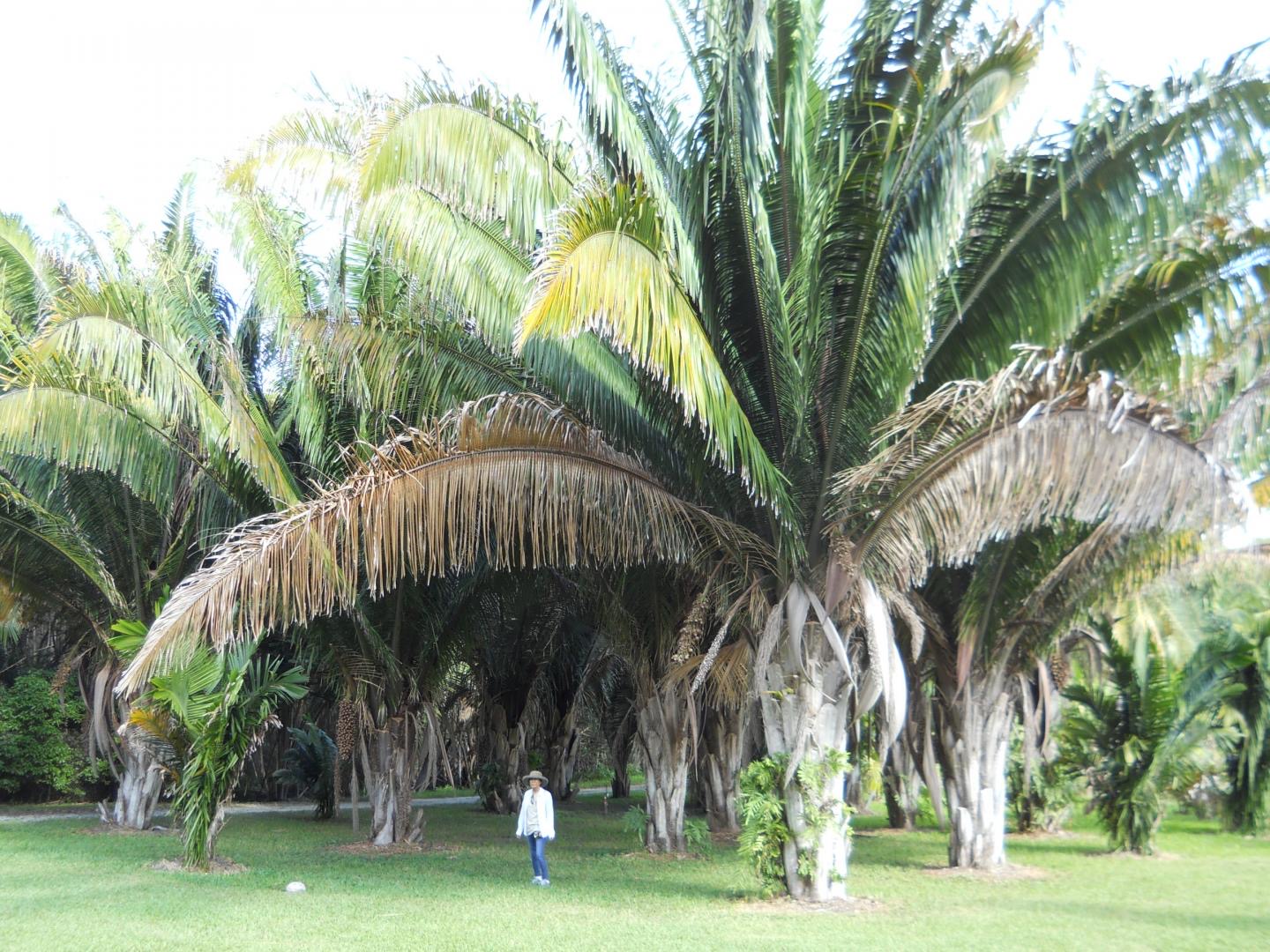One of our owners Harry, Organic Farmer / Permaculturist, shares his experience of discovering Cohune Palm.
Hello neighbors, some of you may have noticed George and I were doing a little planting on Tuesday. This was a last-minute plan resulting from a few casual conversations. A couple people had mentioned to me that there was talk of putting some trees in front of the great wall surrounding what will soon be a workshop and construction material holding area. The next day I was talking-trees with George and the subject of palms came up.
He said there were some nice cohune palm seedlings in the wooded area east of the castle near the river. So, George and I then conspired to transplant some of the palms. A quick message to Phil with no specifics on exactly when or how this would take place, and we got the ‘thumbs up’. We removed seven five-foot seedlings from the Queen’s land along the Belize River. We planted the trees into the strip between the wall and the lot line. We decided to go with 20 feet between trees. It may not be the ideal spacing but it’s the best we could come up with. It will be a few years before they fill the space so other ornamentals could be planted between the palms.
I have planted or transplanted tens of thousands of plants in my career. From vegetables to herbaceous perennial fruit, to trees, but this was my first time doing it in the tropics!
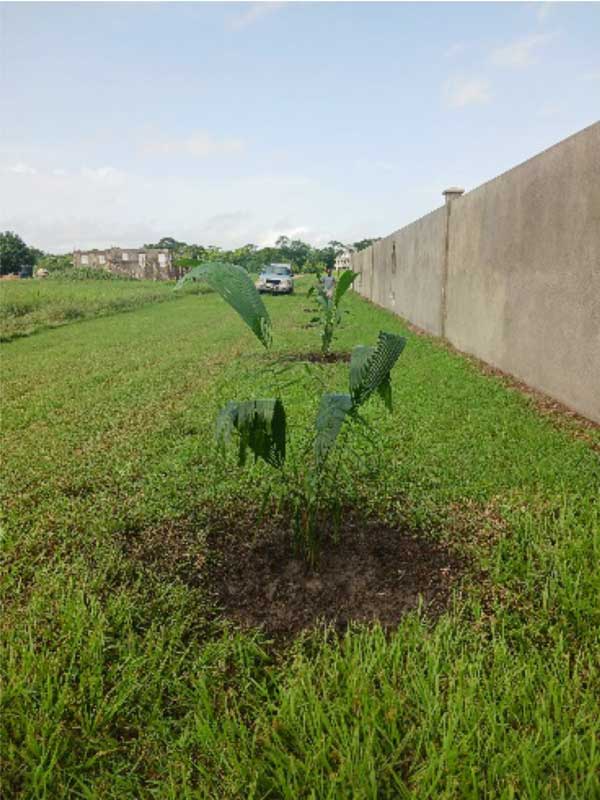
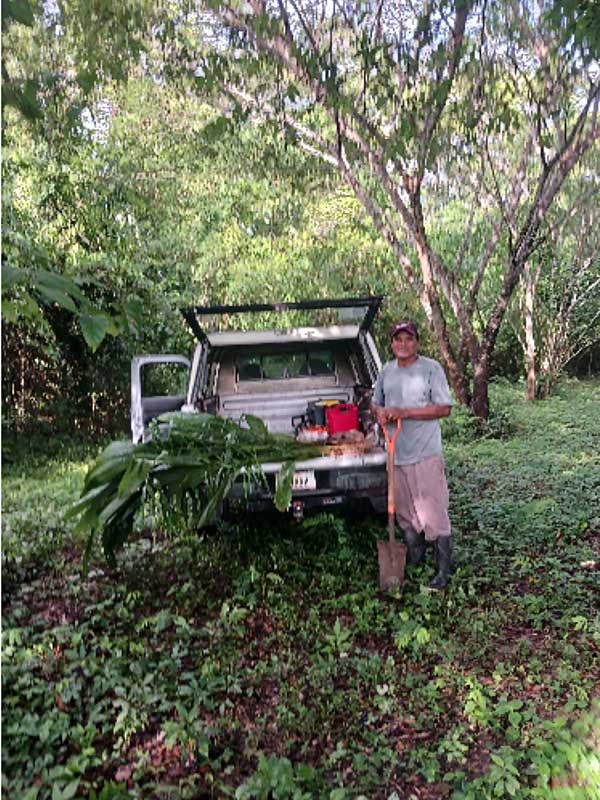
Where I come from you wait for the trees to go dormant before transplanting. But trees generally don’t go dormant in the tropics except for drought stress and that is not a good time to transplant. This is a learning process for me. I know enough about plants to know I don’t know enough about plants in the tropics. So, I went with George’s recommendations and looked at it as a learning experience. I paid George for the tropical horticulture lessons. He was not sure if the palm seedlings would survive because we could not keep a ball of soil around the roots. That riverside jungle soil was just too crumbly and no matter how we tried to dig them out the soil fell cleanly away from the roots. On the positive side, we were able to get most of the small feeder roots. We both think it went well and have confidence that they will survive.
It was a stuffy rainy day, and the roots didn’t have any opportunity to dry out. Hopefully none of the saltwater pouring off me burned any of the roots. And in George’s words “the Cohune palm, they don’t die easy”. I think these palms will look amazing along the wall and will be a valuable resource. If they survive, feel free to message the Queen and thank her for the palm trees.
The Cohune palm Attalea cohune is on the top of my plant list for the forest garden project. It is native to Mexico and south America. The reason I am interested in this palm is its multiple uses in forage, food, oil, and construction. The leaf or frond can grow over 30 feet in length and is used to make palapa roofs. This is not the thick thatch roof made with bundles of grass or fronds tied to roof poles.
A cohune palm roof is woven and looks like a basket on the inside. The cohune also produces abundant small nuts that can be used as animal feed or made into palm nut oil. Cohune palm oil can be used to make soap, flavor soups, burn in lamps (some say it will repel mosquitoes) and use as a lubricant. I hope to make some shelters using Cohune palm.
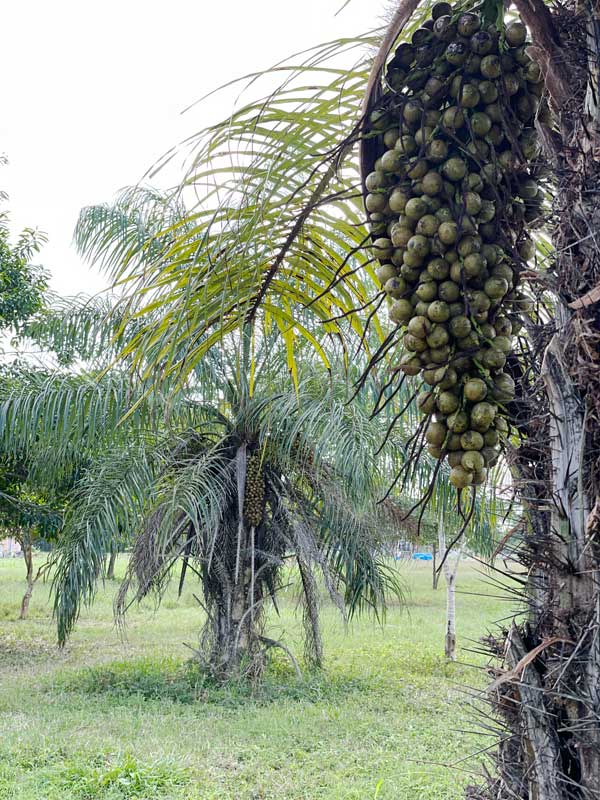
Having the palm trees on-site will make it easy to harvest the fronds if we want to build palapas in the future. This is a plant we definitely want growing in our community. It could play a substantial role in our long-term sustainability.
As far as cosmetic value is concerned, I think the cohune is one of the most majestic palm trees that grows in the tropics. It may be the most iconic of all jungle plants and should be a visible feature of Carmelita Gardens.
My plan is to write a short article on the plants that I put into the new forest garden as I plant it. I would like to share it with you.
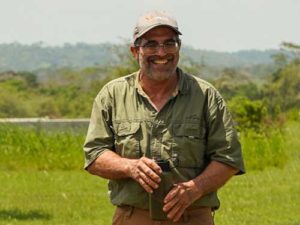
Harry Hoch
Organic Farmer / Permaculturist


